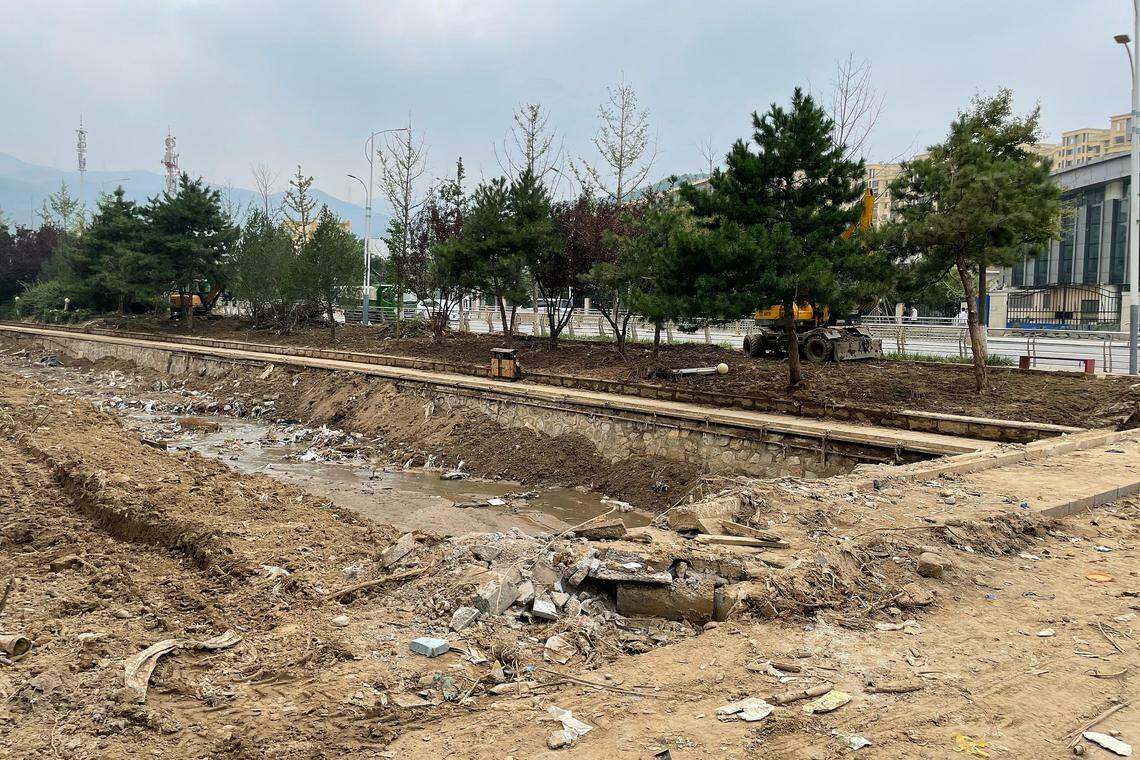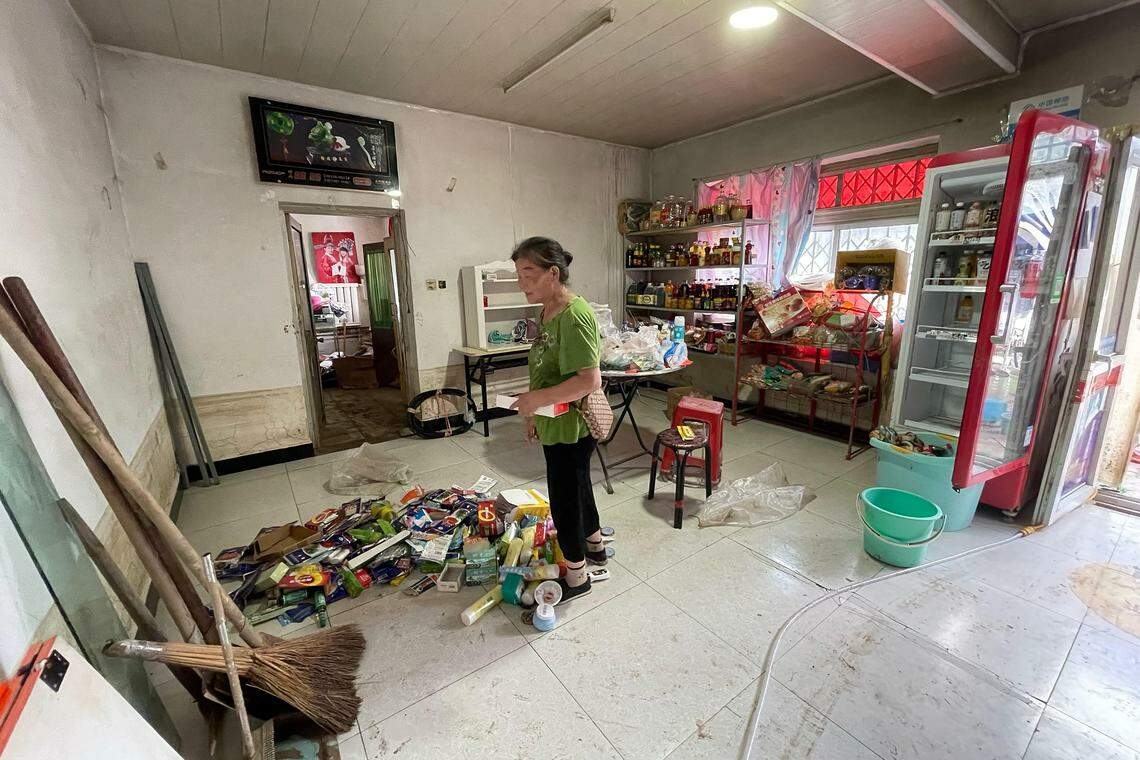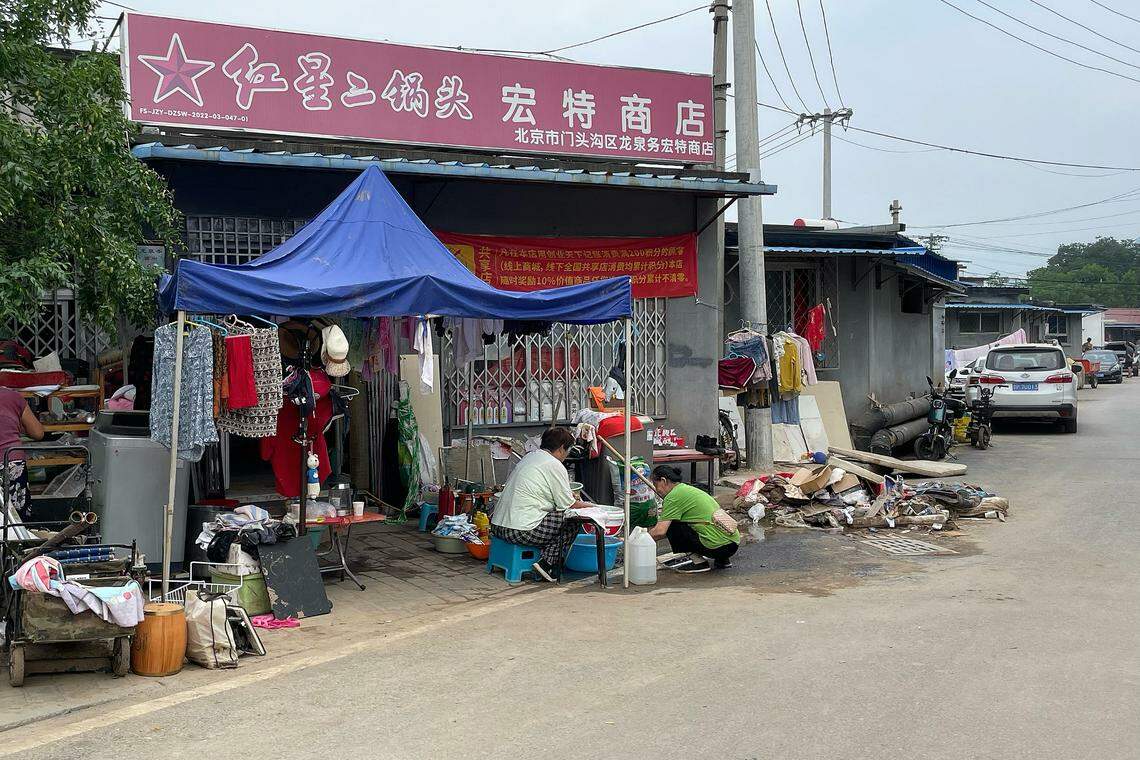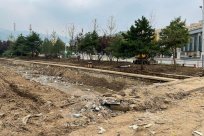The Beijing Municipal Government released the flood prevention and disaster relief situation for more than a week on Wednesday (August 9), and at least 33 people were killed in the flood.
According to the on -site observation of the joint Morning Post reporter, Mentougou District, the worst disaster in Beijing, has roughly restored its original appearance, but the more serious affected households in some villages have not yet completed subsequent cleanup work.
The largest rainfall in 140 years of the Chinese capital Beijing from July 29th to August 2nd, causing serious floods; the Beijing Municipal People's Government News Office held a press conference notification near a week after the end of the rain.33 people died, mainly caused by flood flooding and collapsed houses, and 18 people were missing.
Xia Linmao, member of the Standing Committee of the Beijing Municipal Party Committee and Executive Deputy Mayor of the Municipal Government, said that as of 24:00 on Tuesday (August 8), the flood caused a disaster in total, 59,000 houses collapsed, and 147,000 were severely damaged.The crop is 225,000 mu, and the current disaster loss is still staged statistics.
At the press conference, all the participants stood up and mourned for the victims.
Yu Huafeng, secretary of the Mentougou District Party Committee, who was the worst in Beijing, said that this is the most damaging degree, the widest disasters, and the largest economic loss in the Mentougou District.There are 310,000 people in the district, about 77%of the population in the region, and 40 villages to be rebuilt, including the Tantao Temple town where the Millennium Tong Tuo Temple is located, and 47%of the villages are affected.
When a reporter from Lianhe Zaobao visited Mentougou City on Wednesday, most of the stagnant water and silt of the streets have been cleared, but the water vehicles are still seen everywhere.
Some street railings and roads near the river have traces of being washed away. The water level of the river has fallen, but the river channel is full of garbage.Many vehicles outside the repair manufacturers are also full of vehicles that are soaked by floods and waiting for maintenance.

The 60 -year -old resident car was soaked during the flood. He told this reporter that nearly 40 cars were soaked in water on the streets of two or three hundred meters on the street.His car was also damaged in the flood, and it took a whole day to remove the parts to clean up one by one.
Compared with the urban area, some villages are seriously affected. Longquanwu Village near Yongding River is one of the affected villages.
Li Weiyun (62 years old) is one of the worst losses in the village.Her commercial and residential houses were soaked by floods within a few minutes. When the flood was the most violent, the water level was close to the shoulders. Most of the goods in the store were damaged, and almost all furniture on the first floor was scrapped.

When the reporter visited, Li Weiyun was a small cover outside the room where she lived in a two -purpose house.
Li Weiyun said that she spent eight days with the assistance of nearby villagers and volunteers to clean up most of the silt in the family. In a small room used to stock up, volunteers dug out eight large barrels of mud.At present, the first floor of the house is almost empty.
Li Weiyun is still difficult to estimate the specific losses. She lamented: "People in our village have no insurance, nor do they know if they can claim, or who they want to claim.Think again. "

Fangshan, located in the southwestern part of Beijing, is also one of the most affected areas. The 200,000 acres of cultivated land in the region was overwhelmed. 77 villages were broken, and rural highways were 230 kilometers. 119 bridges were damaged.
Beijing has canceled the yellow warning on Tuesday last Tuesday.As of the evening of this Tuesday, the city has transferred more than 82,000 people, and the affected people have been placed in village committees, schools, gymnasiums and other places.
Beijing official: After three years of recovery of the flood reconstruction
After Beijing suffered a large rainfall, the official promised to resume reconstruction in about three years and ensure that "there is no major epidemic after the disaster."
Xia Linmao, member of the Standing Committee of the Communist Party of China and the executive deputy mayor of the Communist Party of China, said at a press conference on Wednesday that the idea of reconstruction after the disaster in Beijing is: "Basically recover one year, comprehensively improved in three years, and sustainable development in the long run." He said that a year of basically recovery refers to the basically restoration of the destroyed water conservancy facilities after about a year, repair damaged houses, and rebuild farmers' self -built houses on the original site.The construction of infrastructure such as communication, as well as public service facilities such as education, medical care, and other public service facilities, so that the guarantee capabilities in the disaster area basically return to the pre -disaster level and ensure the basic life of the people.
Xia Linmao also said that three years of comprehensive improvement refers to the reconstruction of post -disaster recovery in about three years, comprehensively improving disaster prevention and mitigation capabilities, significant improvement of development capabilities in the disaster area, and creating a comfortable living environment for the people.
In addition, the official also promised to consider the long -term overall planning, optimize the functional layout of the affected areas, improve the level of infrastructure, basic public service guarantee, and economic development quality and benefits.
After the rain and flood disasters, the disaster area usually faces threats such as drinking water, food safety, and environmental pollution. Beijing official on Wednesday also stated that it will take measures to ensure that "no major epidemic after the disaster" will be taken.
Xia Linmao said that in order to ensure the safety of water and food in the disaster area, more than 150 water supply vehicles were mobilized in the city for 24 hours of water transport into the village, and large water storage tanks were placed in broken water villages to provide bottled water and packaging foods.Factory, water supply pipelines, and self -provided wells for dredging, replacement, disinfection, and detection.
The city has also started the work of removing four harms, deployed disinfection materials to support the disaster area, and cleaned and reconstructed the toilet to deal with the animal body harmless.In addition, Beijing has established a disease risk monitoring system in the disaster area to detect the biological density such as intestinal infectious diseases, the symptoms of the victims, the safety of water supply, and the mosquito flies to prevent post -disaster epidemic outbreaks.



